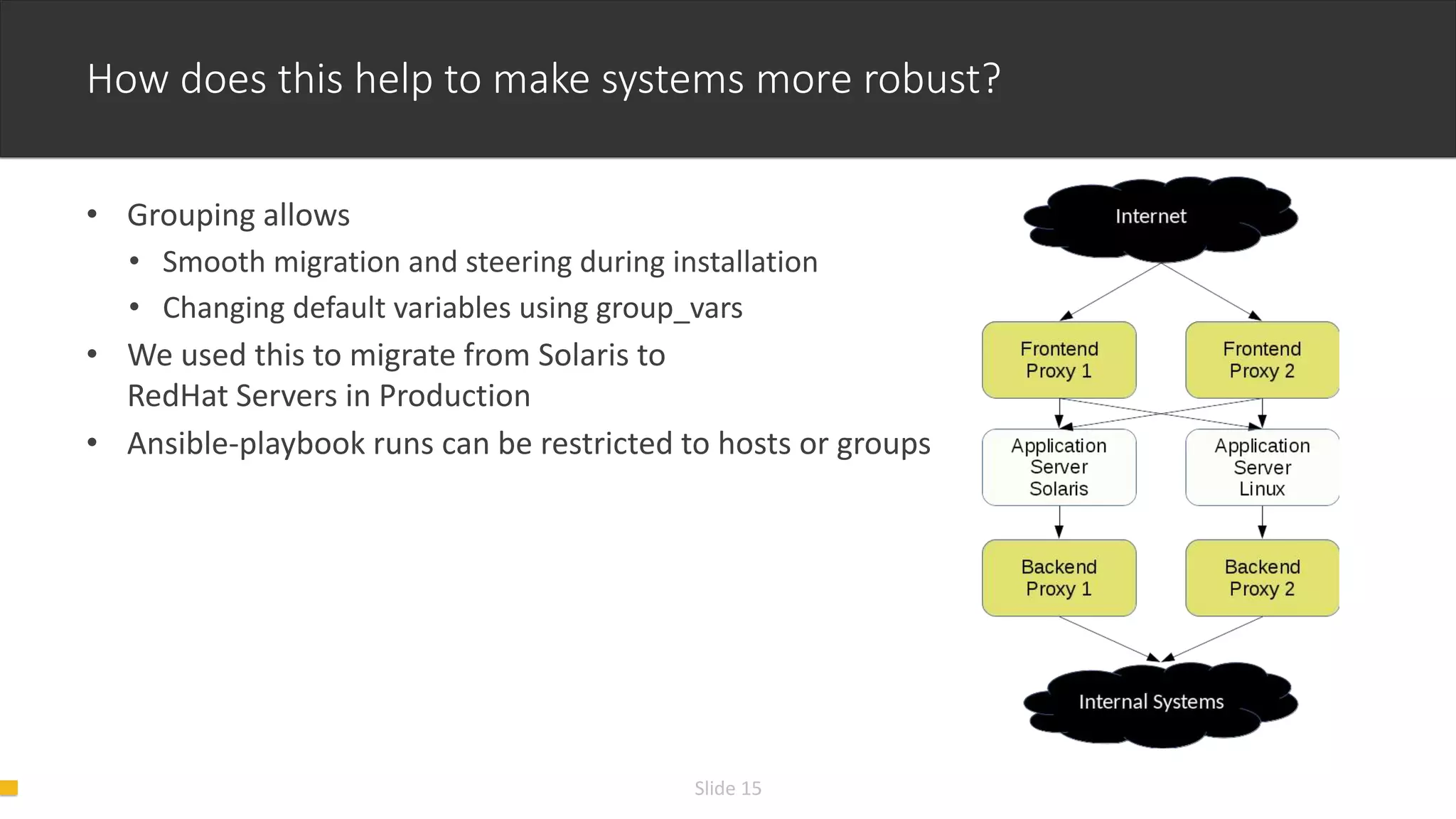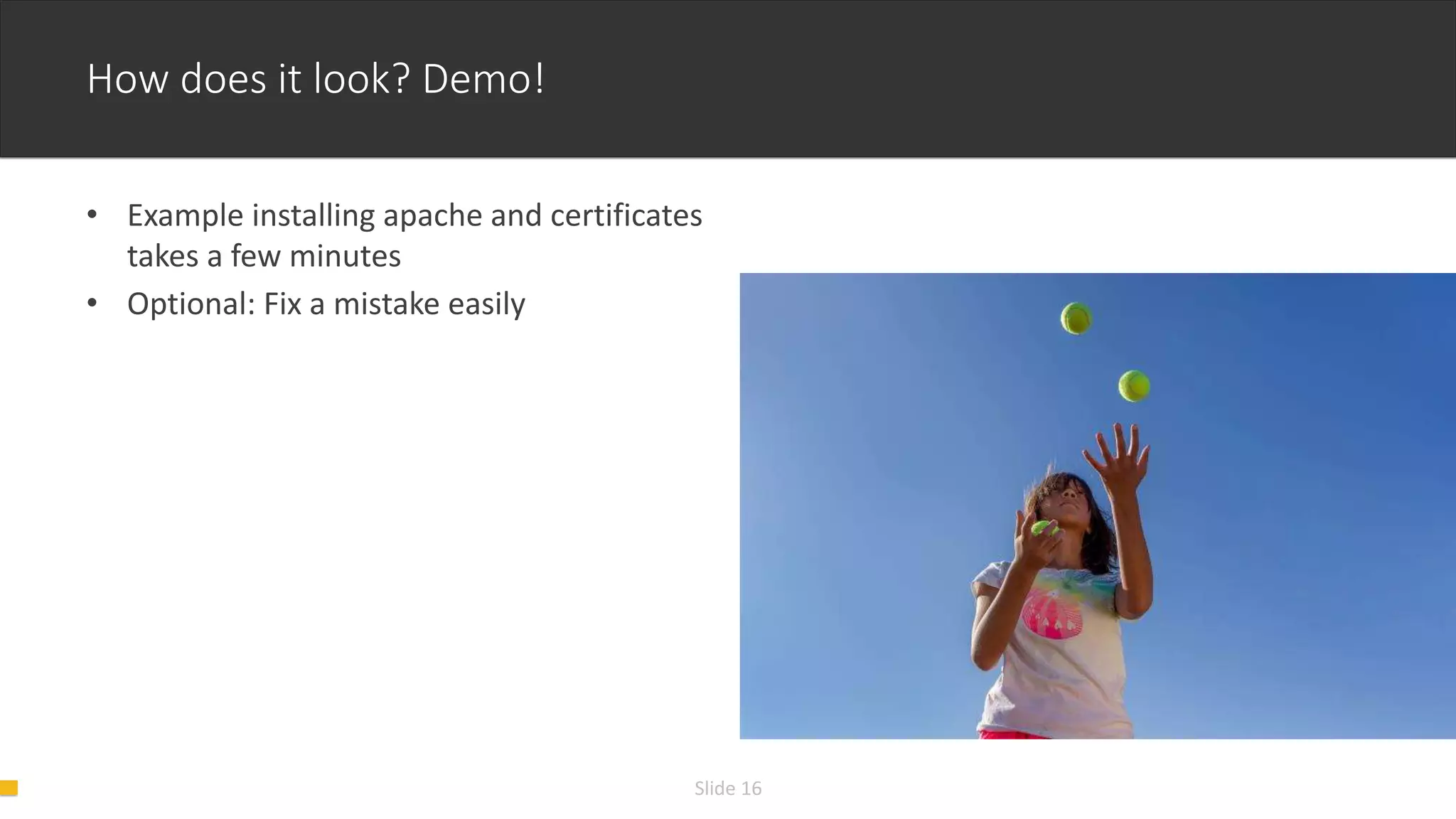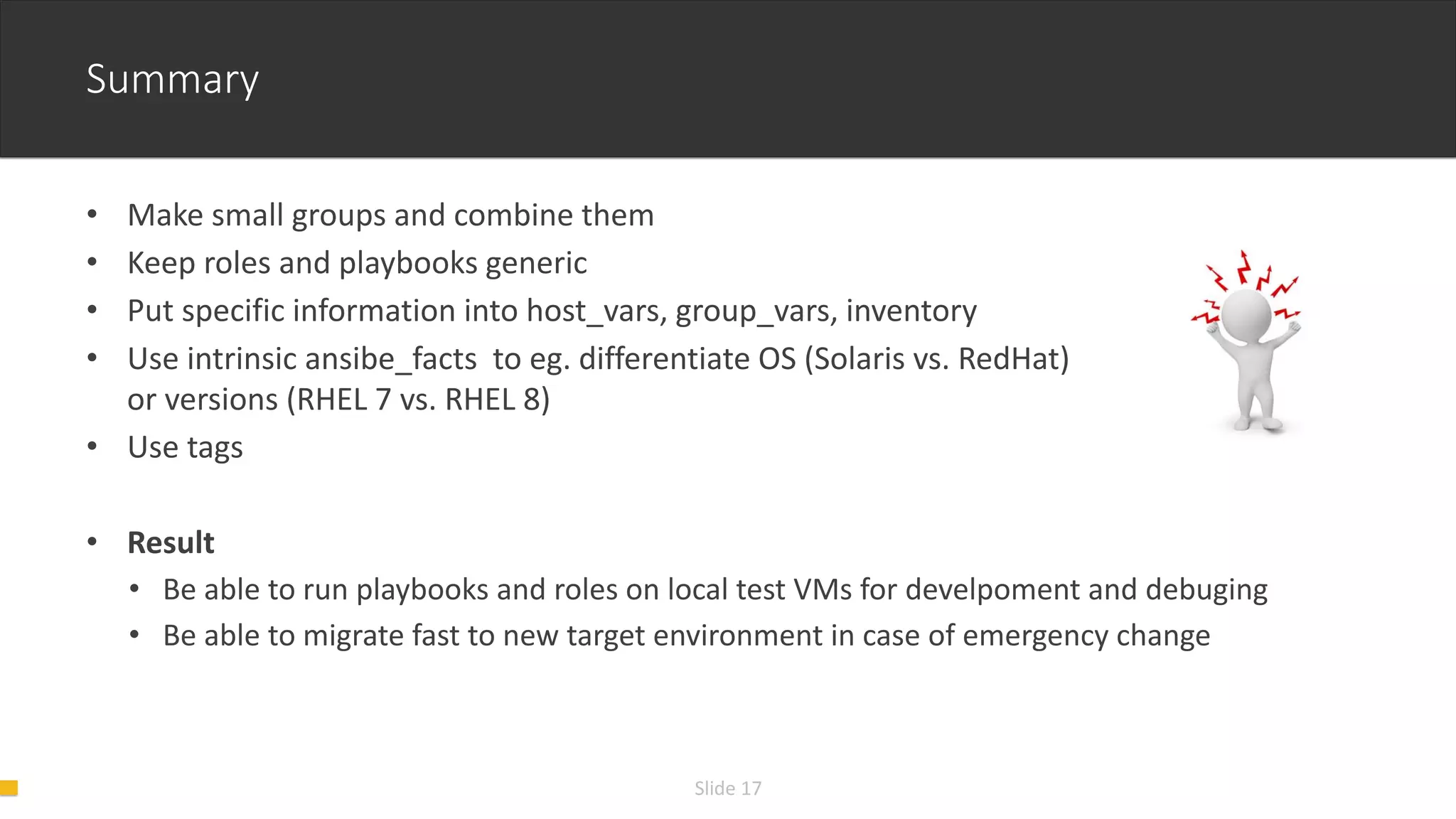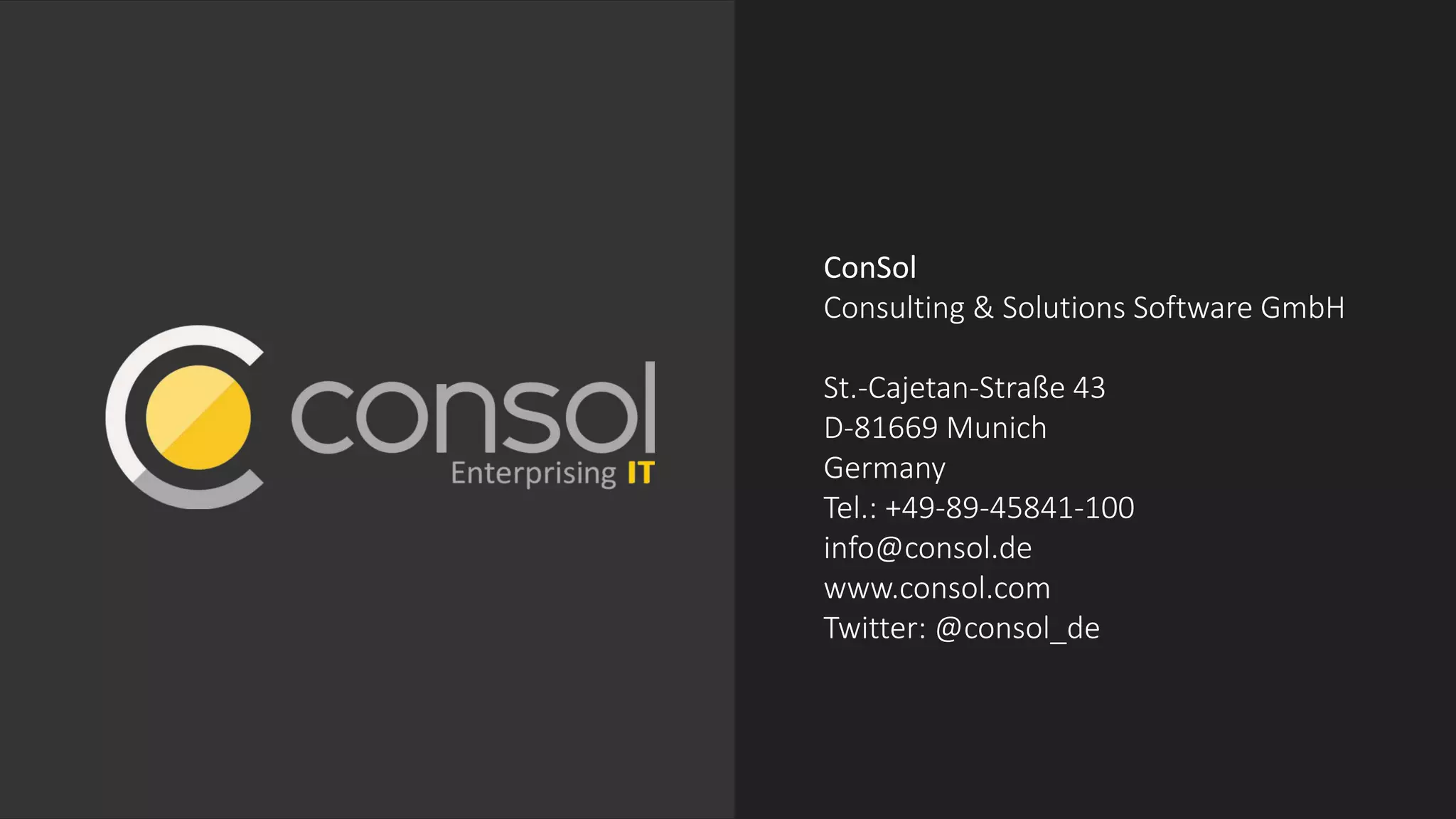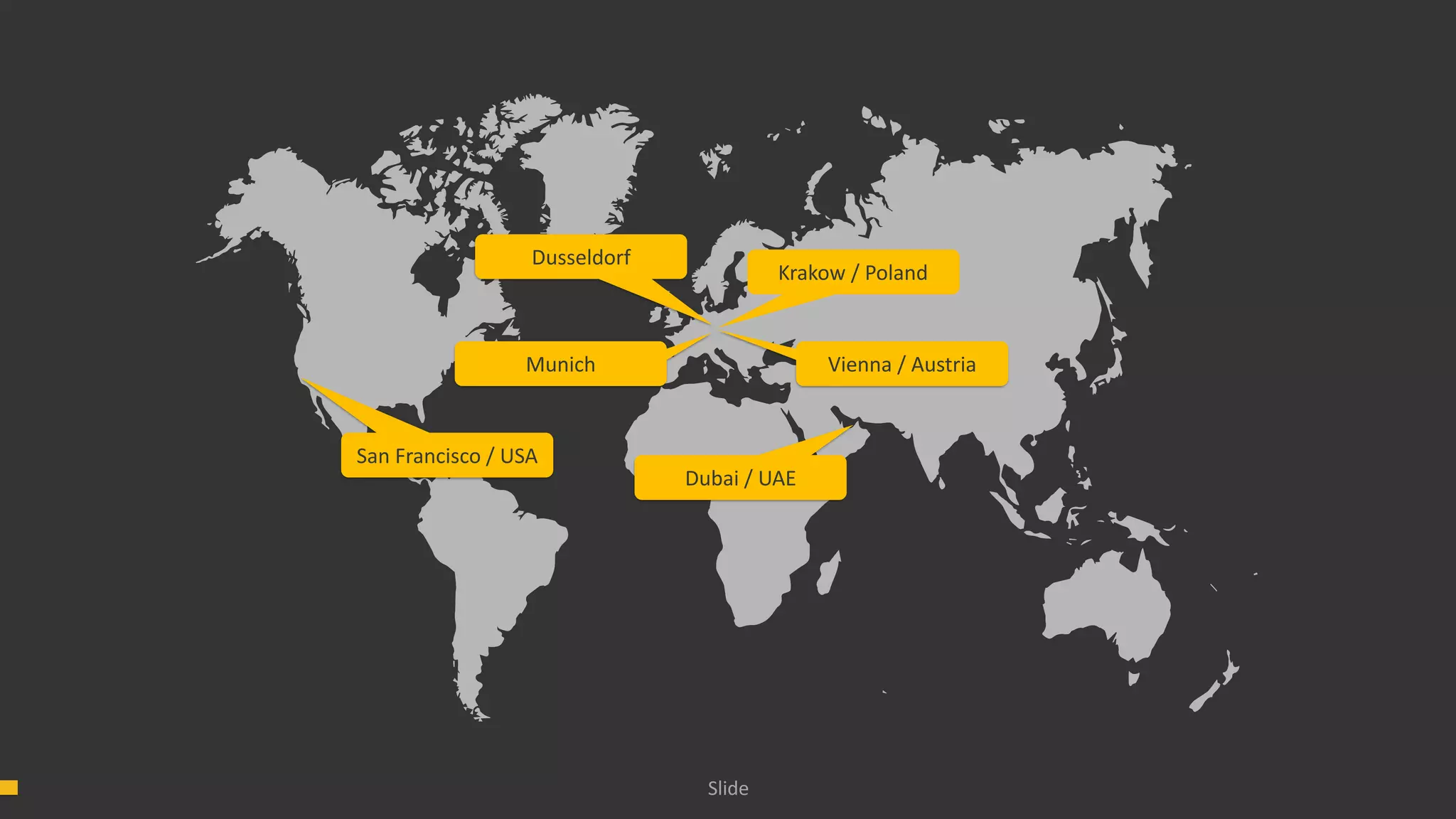The document discusses the implementation of automation tools, specifically Ansible, to streamline application deployment in a telecommunications environment handling over 6 million requests daily. It highlights the challenges faced with manual updates and script-based processes, ultimately leading to a preference for Ansible due to its idempotency and minimal requirements. The summary includes a demonstration and recommendations for using Ansible effectively to enhance robustness and manageability of the systems.
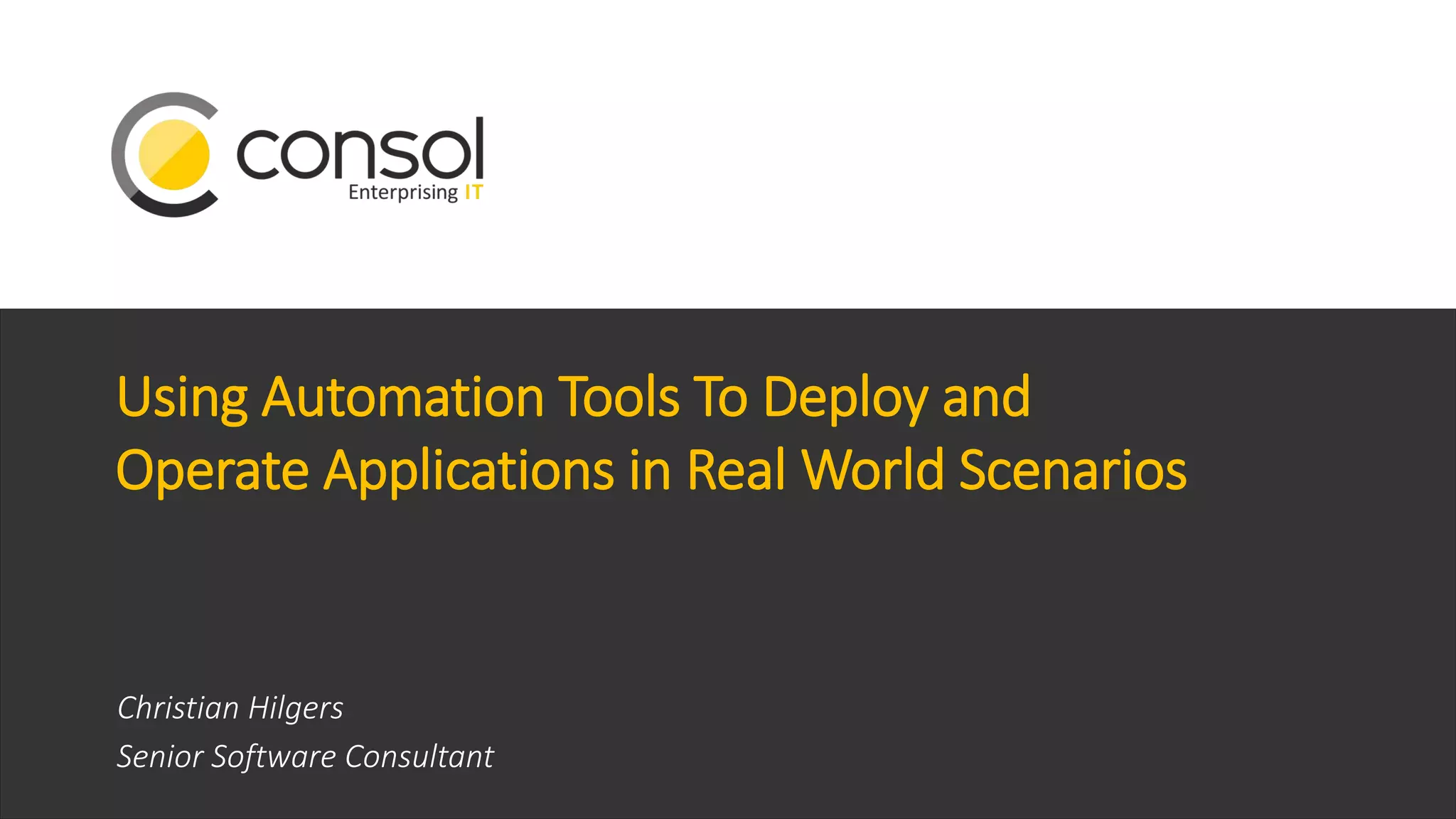
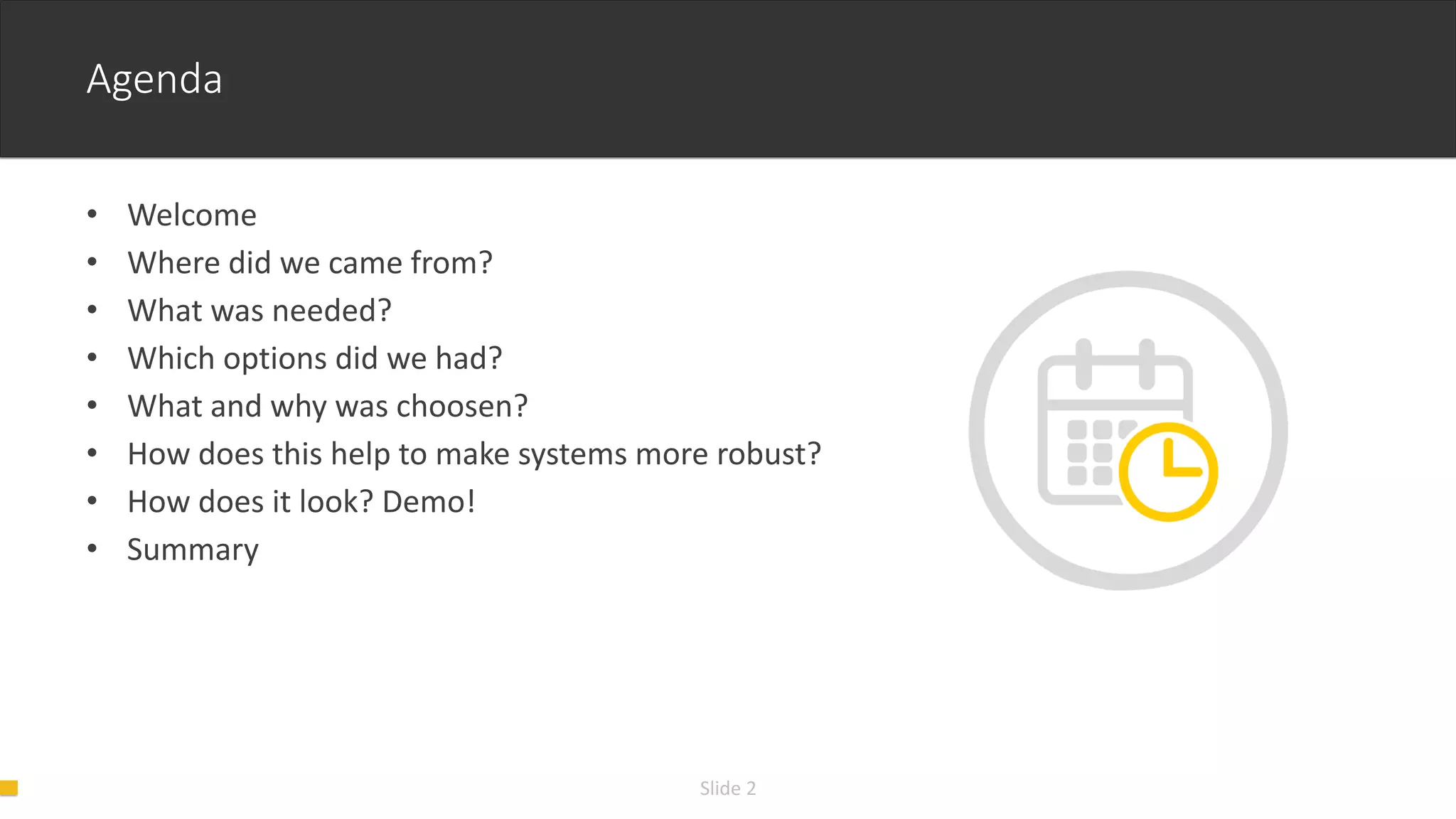
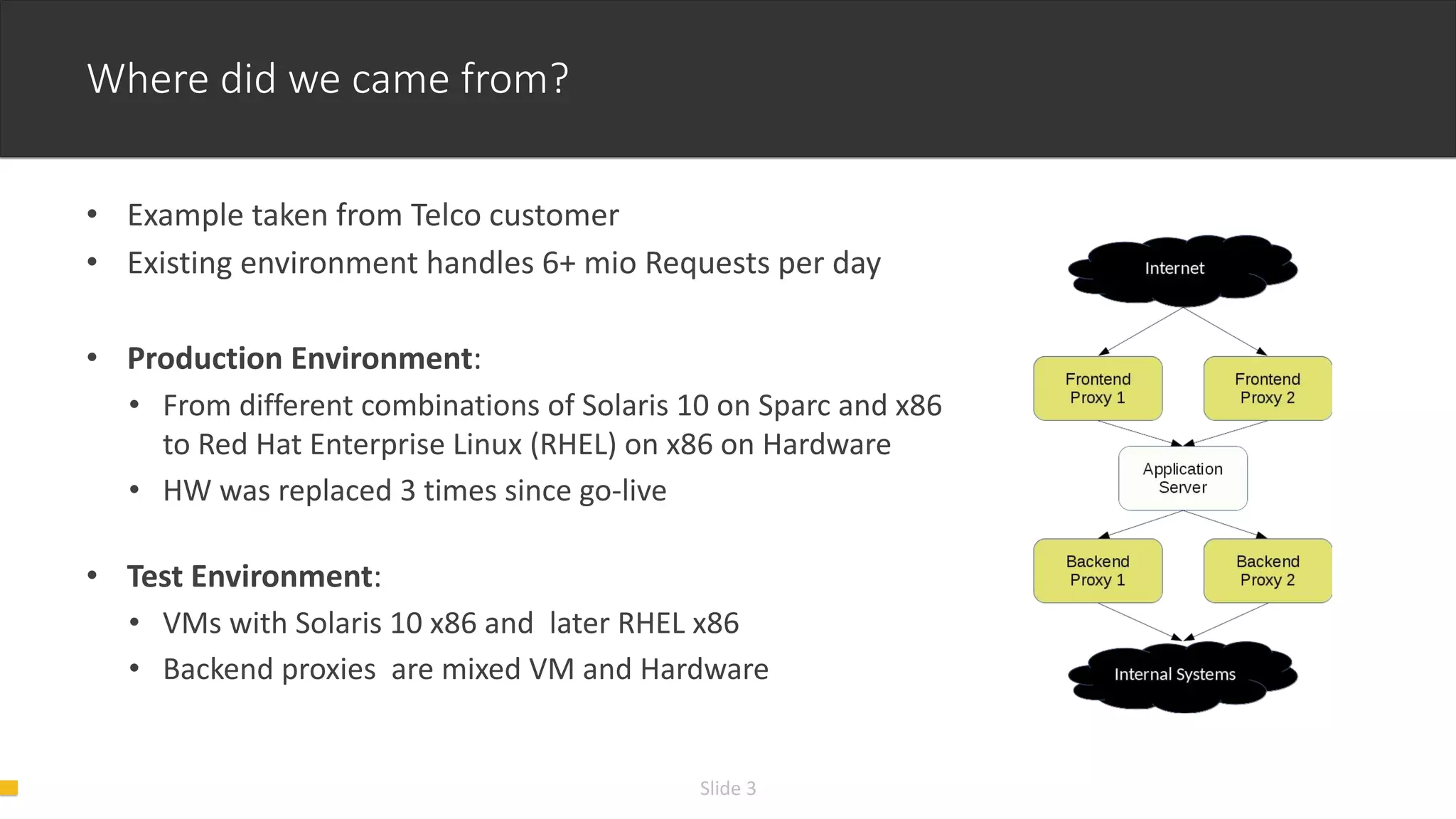
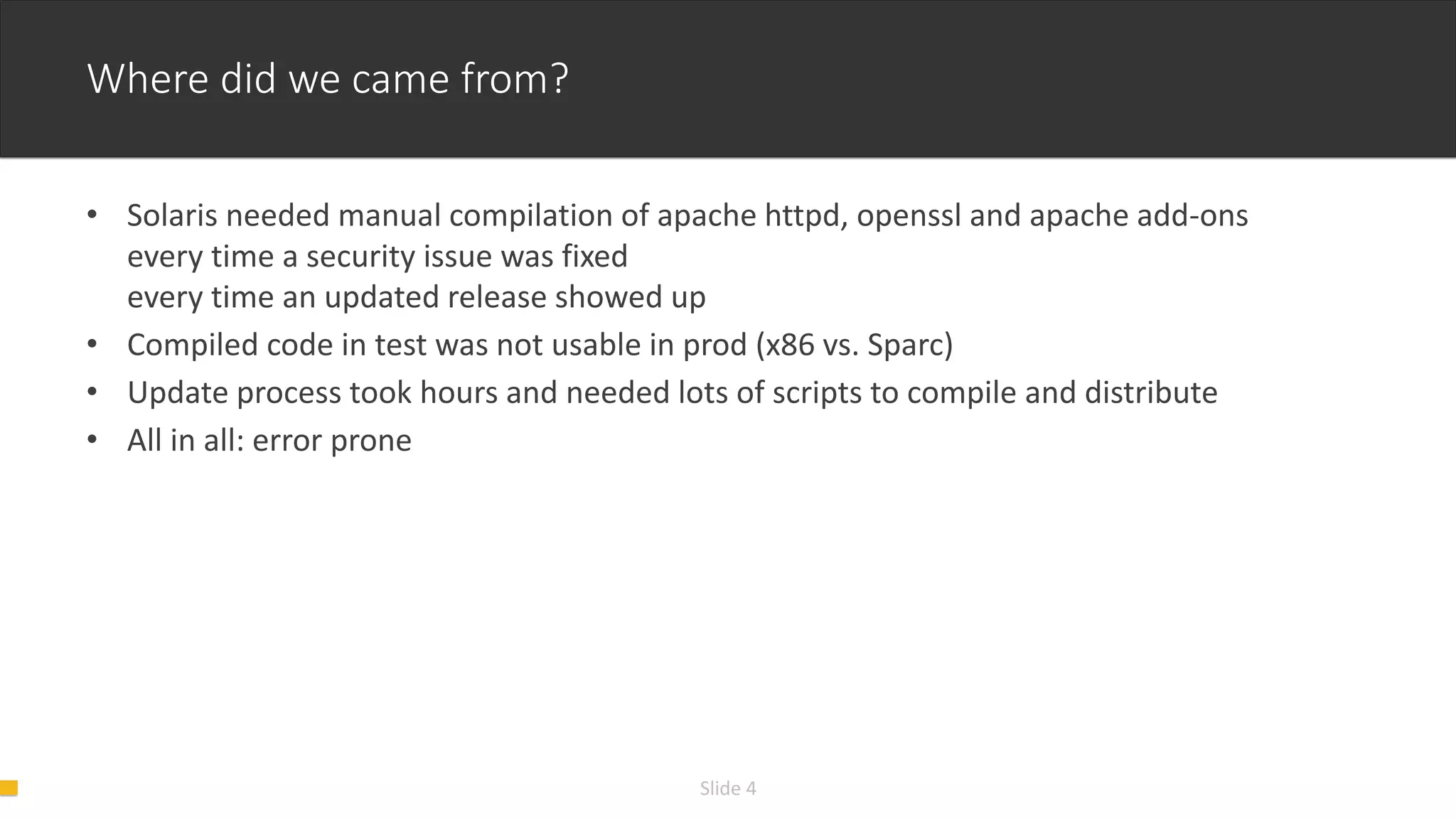
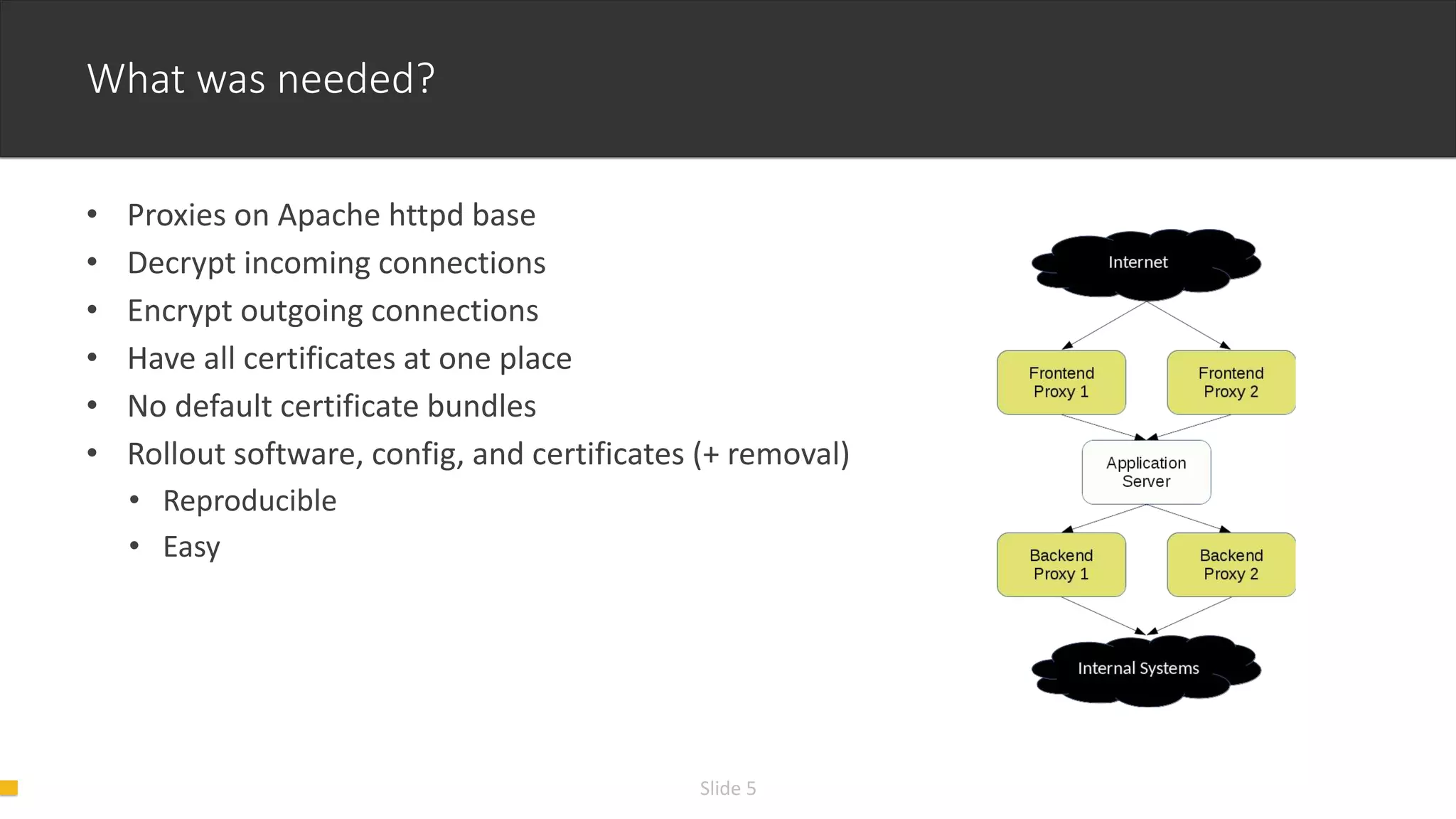
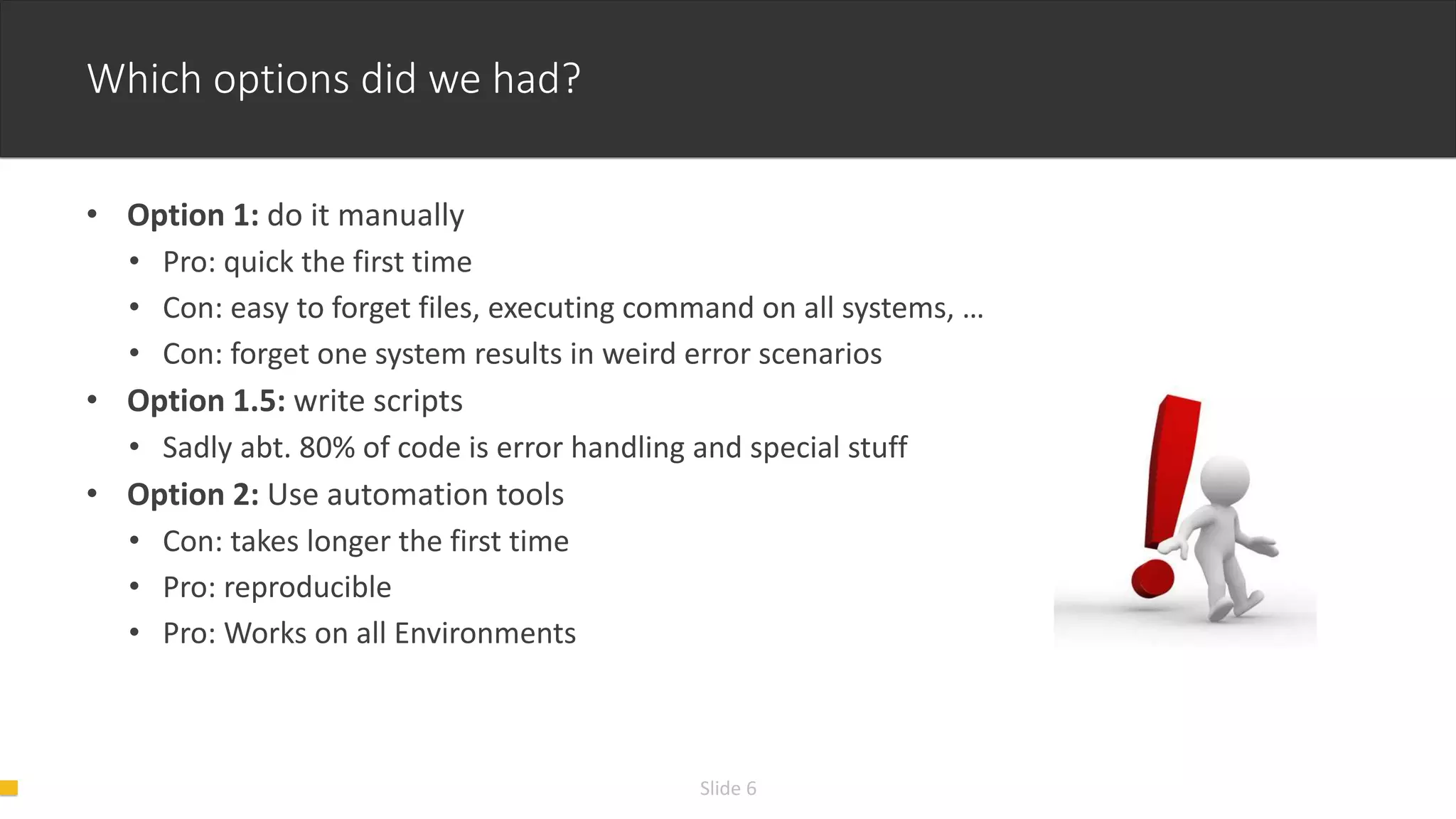
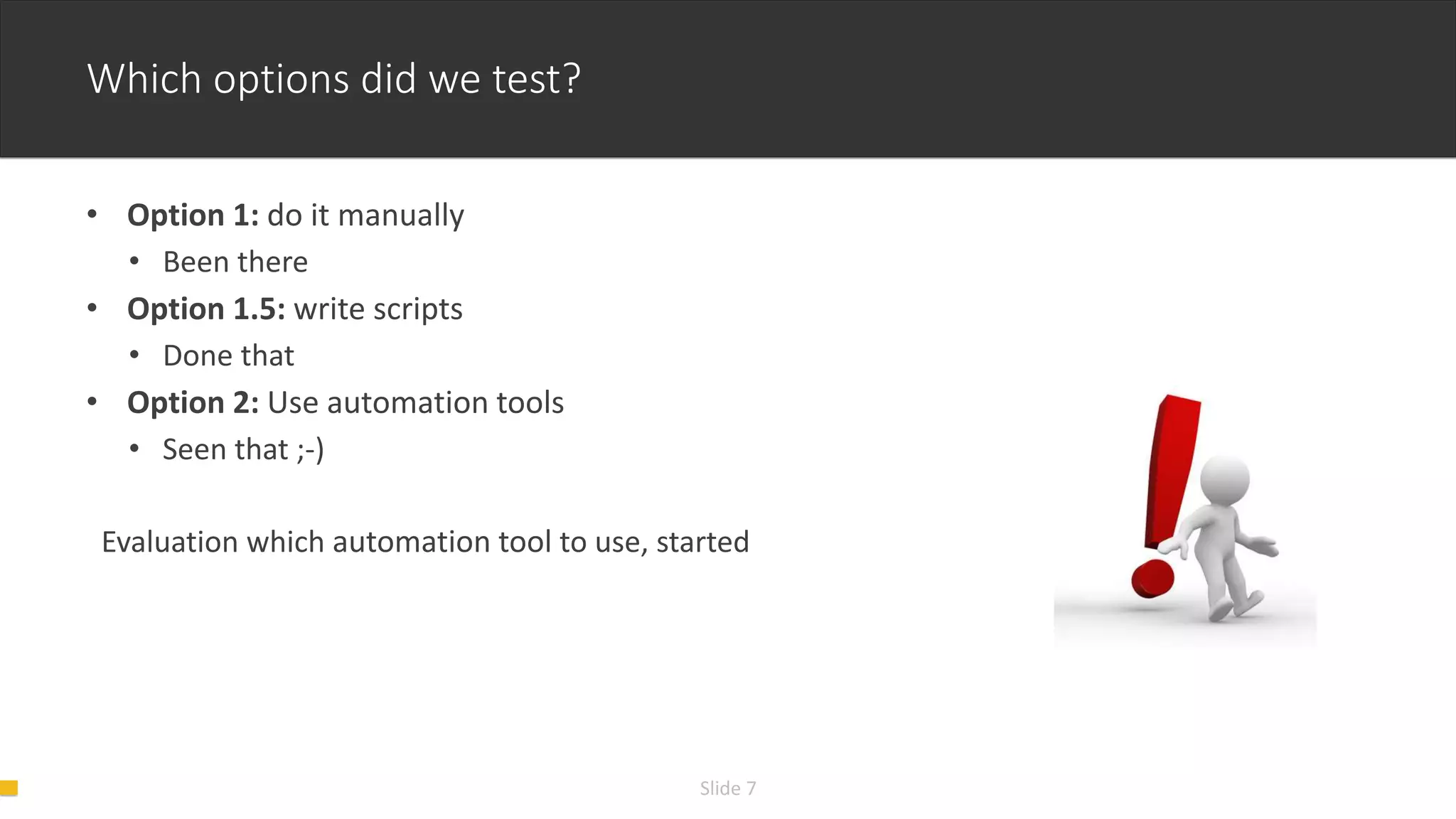
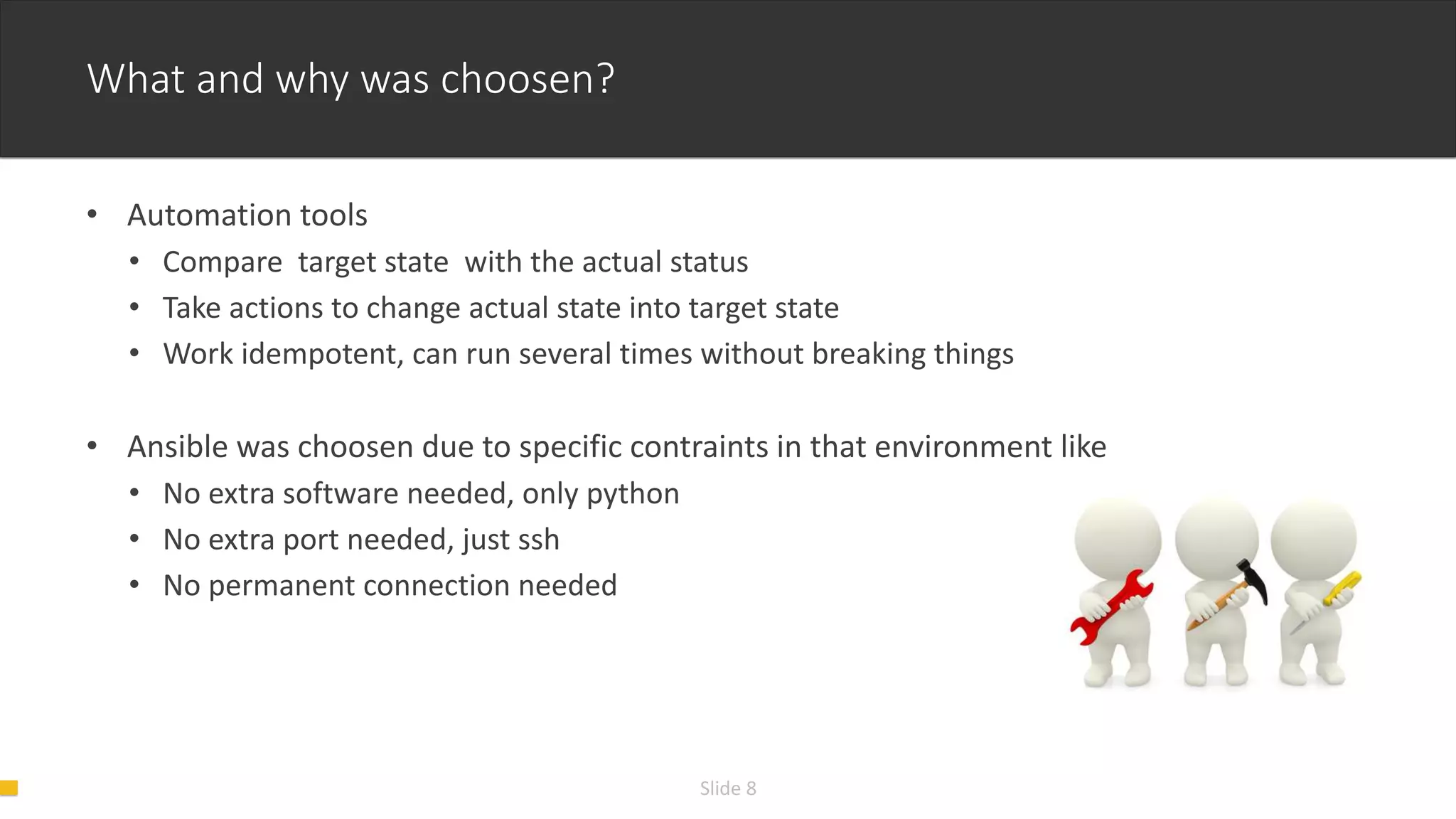
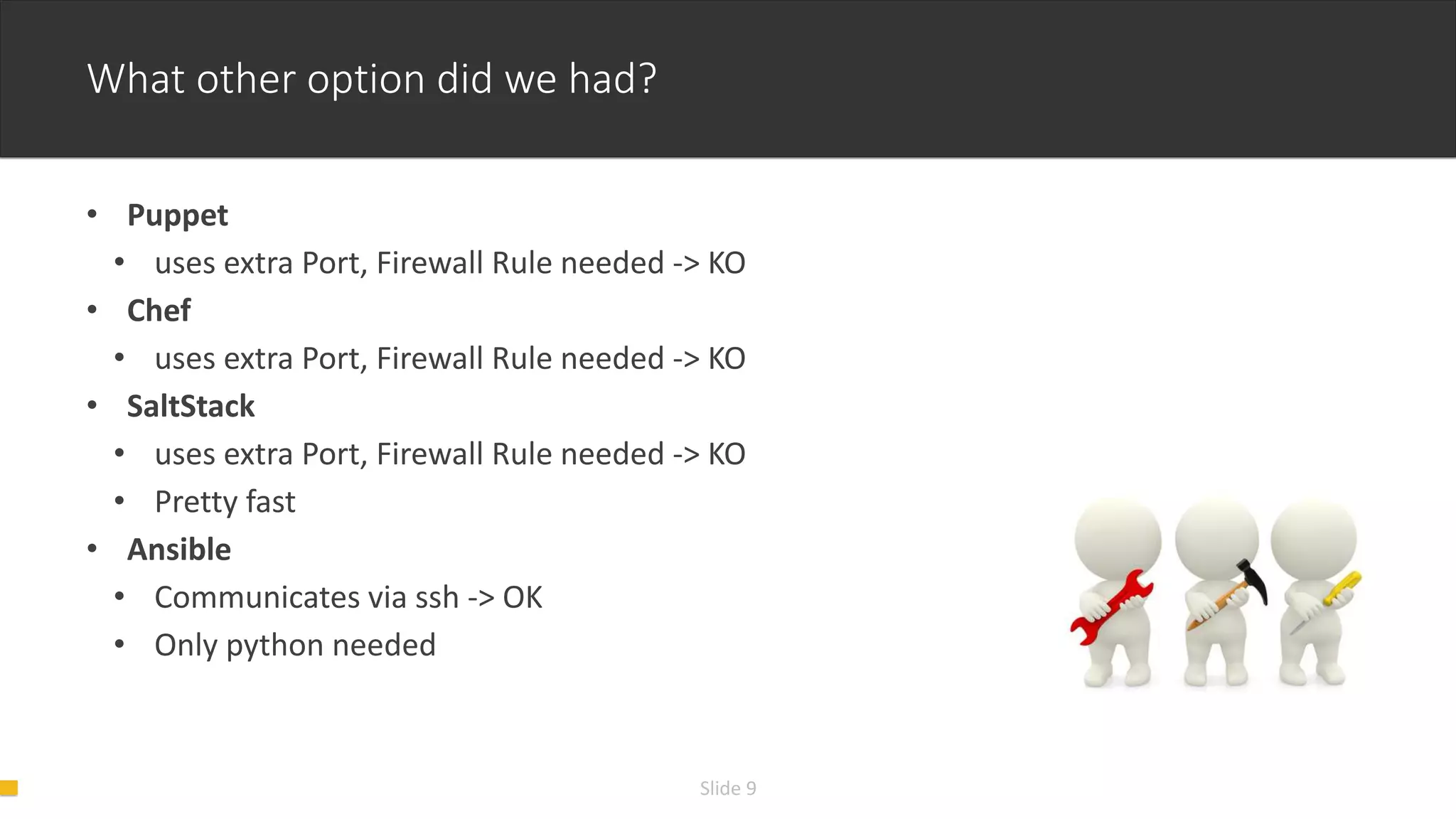
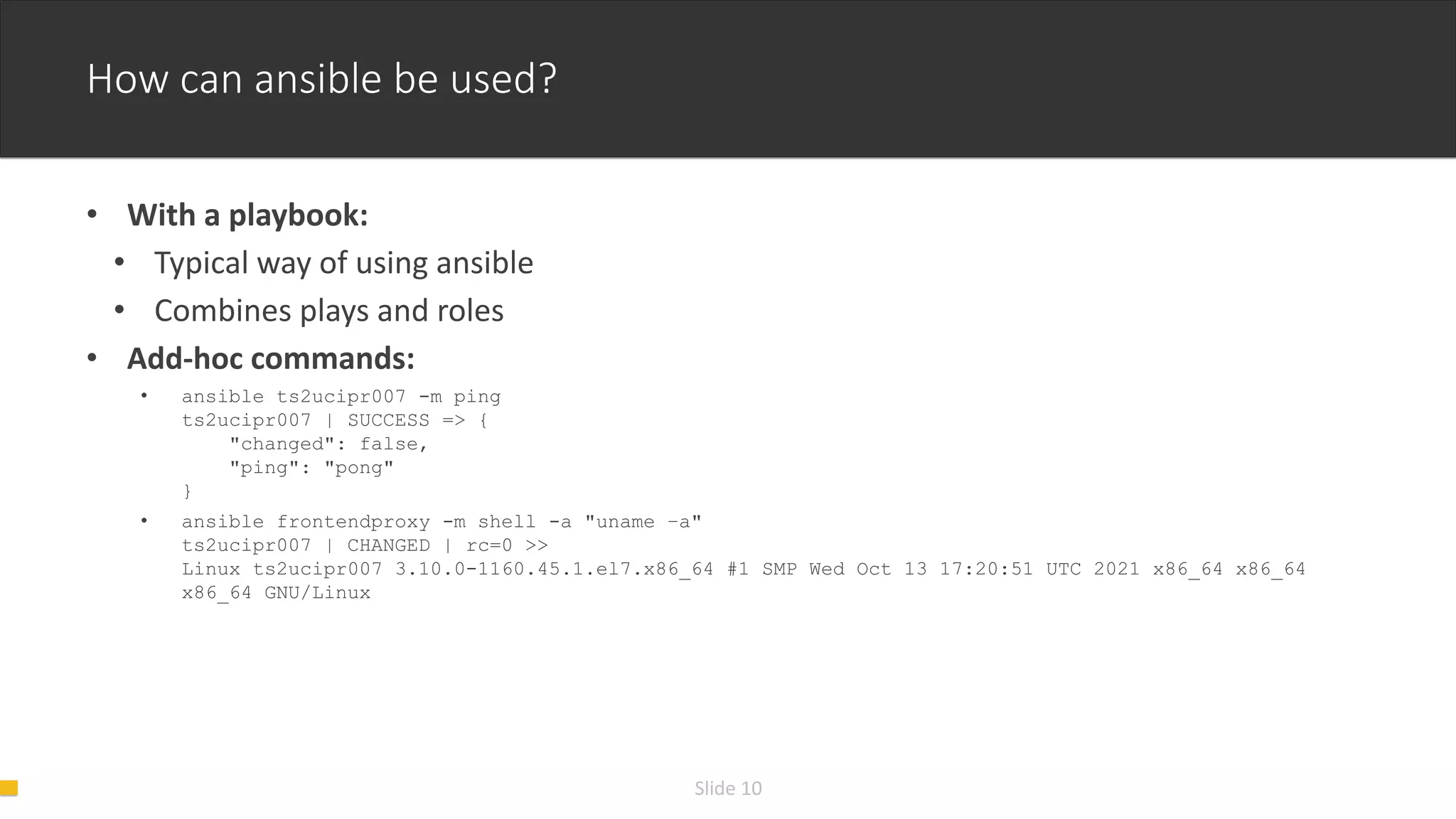
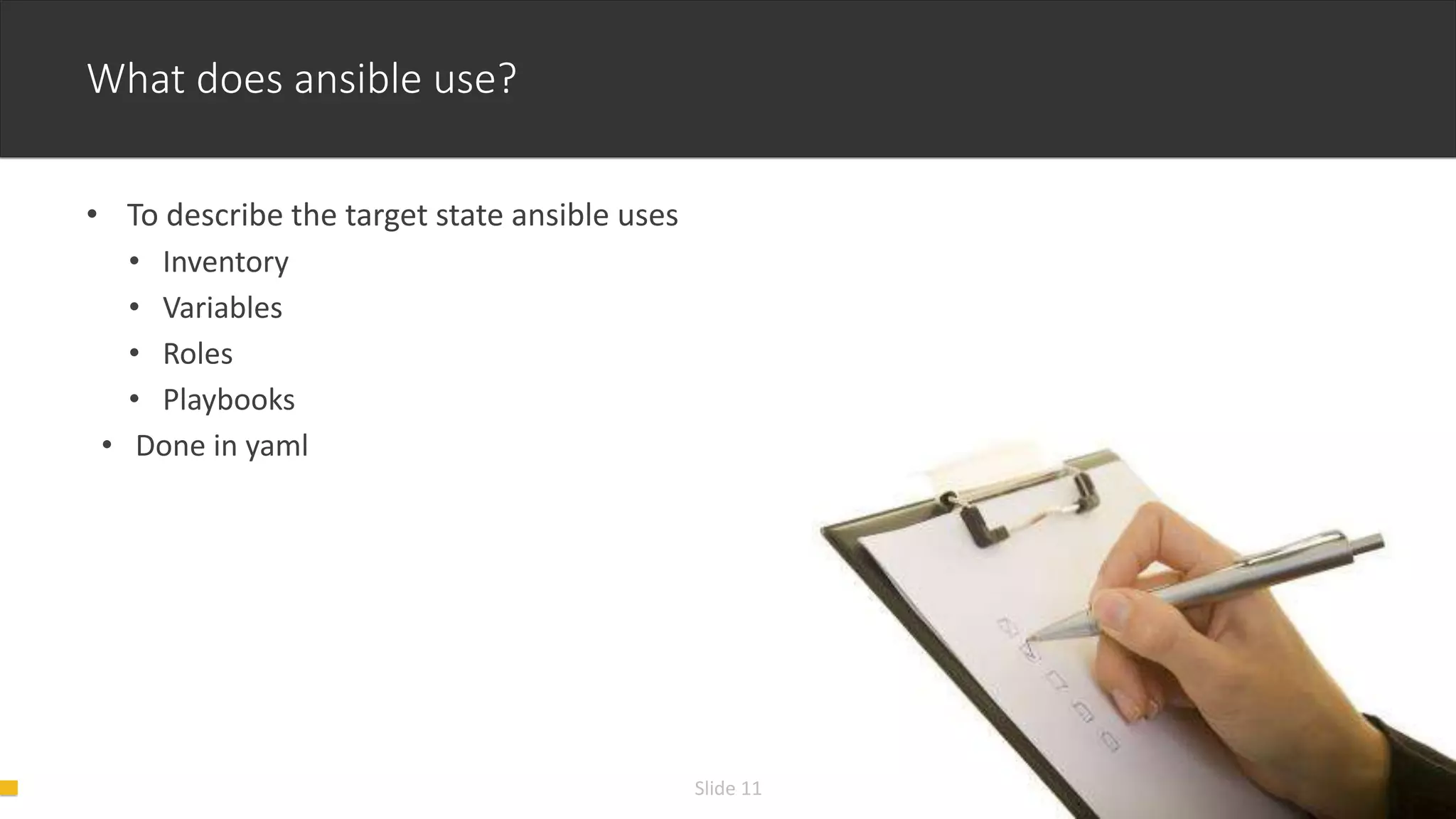
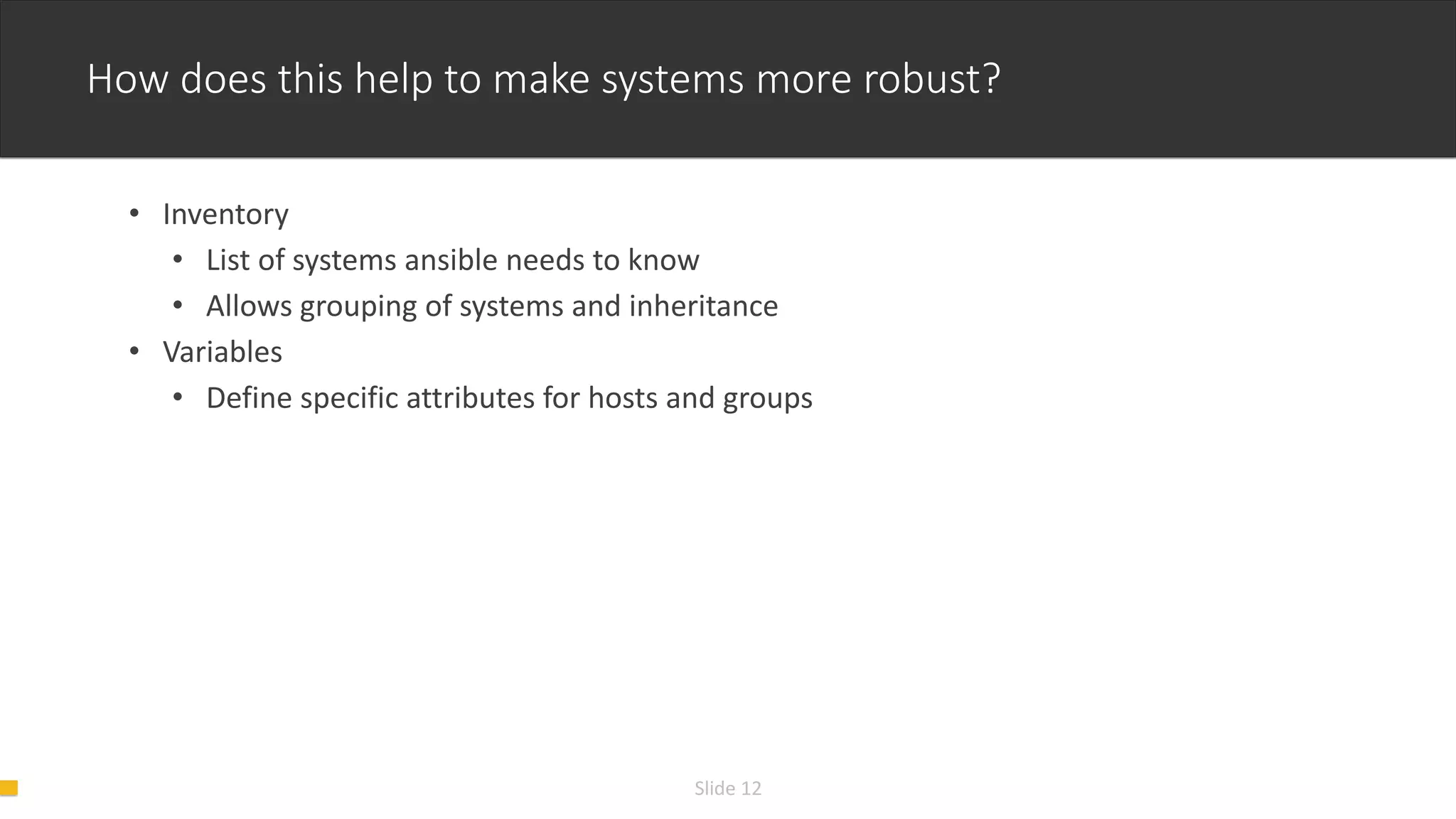
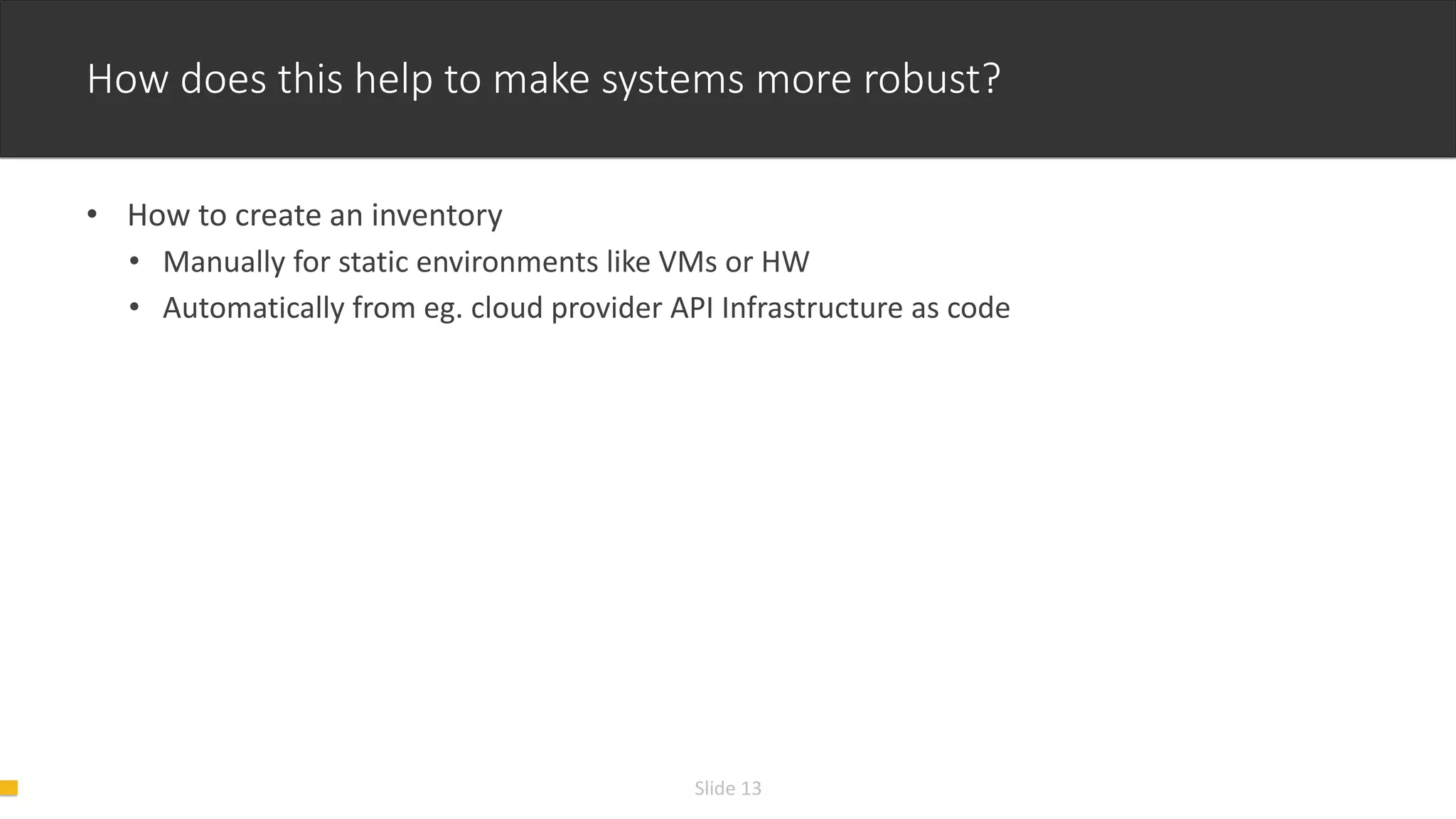
![Slide 14 How does this help to make systems more robust? • Use small groups and combine them [appserverSolaris] appserv001 appserv002 appserv003 mickey minnie [appserverRedHat] appserv011 appserv012 gustav [appserver:children] appserverRedHat appserverSolaris](https://image.slidesharecdn.com/consolansible-211217160051/75/Using-Automation-Tools-To-Deploy-And-Operate-Applications-In-Real-World-Scenarios-14-2048.jpg)
